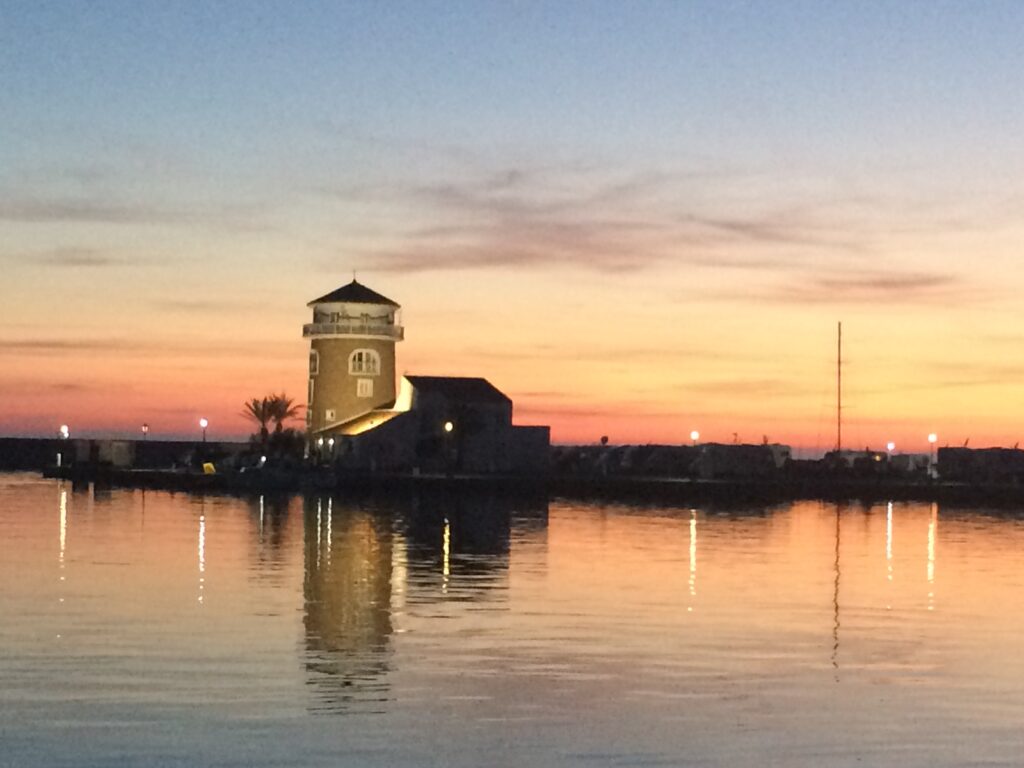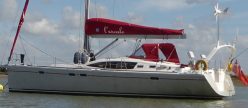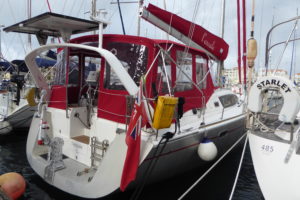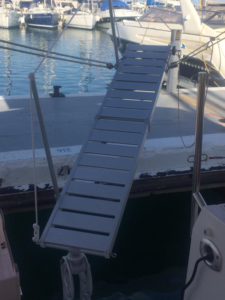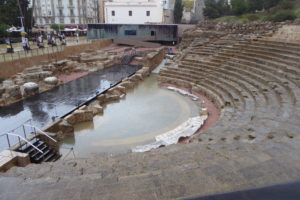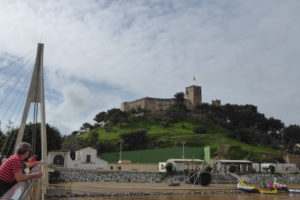Saturday 8 – Tuesday 11 February
Having finally worked through all the last-minute jobs necessary before actually being able to leave port: return the key fob that gives access to the facilities and pontoon, and reclaim our deposit; dispose of rubbish, disconnect the power supply and stow the cable, fold away the bimini so we’ll be able to see the sails, ensure everything below decks is safely stored etc etc, we finally slipped the lines and slid gently away from our rather tight berth at 1100. As always, it took us a further 30 minutes to remove and stow the mooring lines, and all the fenders that had done such a good job of keeping us from becoming too intimate with our nearest neighbours during the nearly three weeks of our time in Fuengirola marina.
The sea was calm and a light high haze didn’t totally prevent the sunshine from filtering through. Being weekend, there were several other sails already out and about, welcome company this early in the season. By noon we had hoisted the main sail, and added the gennaker to enjoy a comfortable broad reach, which would have been peaceful without the engine, except Skipper replaced its vibration with that of the watermaker – for the next several hours.
At 1415 we were joined briefly by two large dolphins cavorting in the bow wave; the rest of their pod remained at a safe distance, but seemed to be centred in one area, perhaps feeding. As the wind increased, Mate felt it would be prudent to furl the gennaker and set the genoa – a good decision as the gusts soon reached 16+ knots, now with much thicker dark cloud blanketing the sky. The wind created a little swell, and we were able to sail goose-winged, or as our German friends in Gibraltar called it, butterfly-winged, which is so much prettier, for the remainder of the 33 Miles to our chosen anchorage off the beach and just outside the marina in Puerto de Caleta de Velez, just East of Málaga.
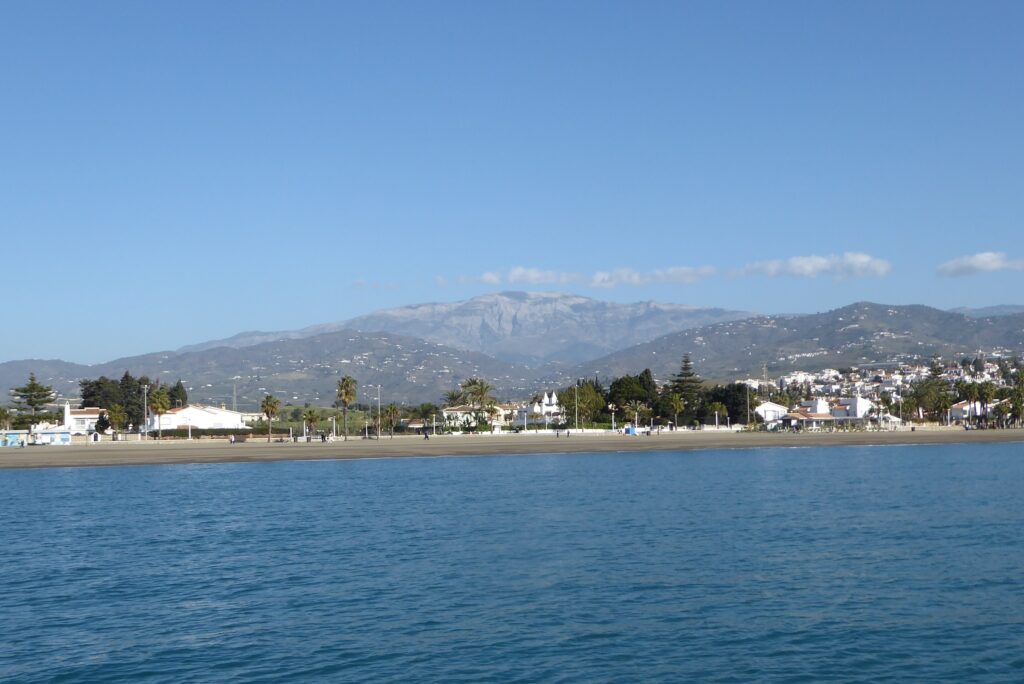
The sky was clearing during the last hour, and we enjoyed a stunning sunset, with the full moon rising in the opposite quadrant, but sadly, having well and truly blown our mooring budget already this month, our parsimony meant a very bouncy, rolly, uncomfortable night, as the swell was slow to dissipate, even without any more wind.
On Sunday we pulled ourselves together as the day came bright and sunny, lifted the anchor and set the sails. However, with almost no wind we motor-sailed out to clear the fish farm and try to find better airs further from the shore. We were joined briefly by three dolphins, and by noon had given up on the genoa and were making water while the engine was running anyway. At lunchtime the log notes “the wind didn’t read its forecast” as it persisted very light and variable, but to make up for it, the scenery was stunning: light clouds along the ridge of the mountains behind the coastal fringe, which is less built up on this particular stretch.
Eventually at 1430 the wind filled in enough to reset the genoa, F3 from ESE, and we were able to complete the day’s passage of 21.5M under sail. The only boat in the village, we dropped anchor in seven metres of clear water, and were soon settled comfortably in the Ensenada de la Herradura, sitting in the afternoon sun in the cockpit.
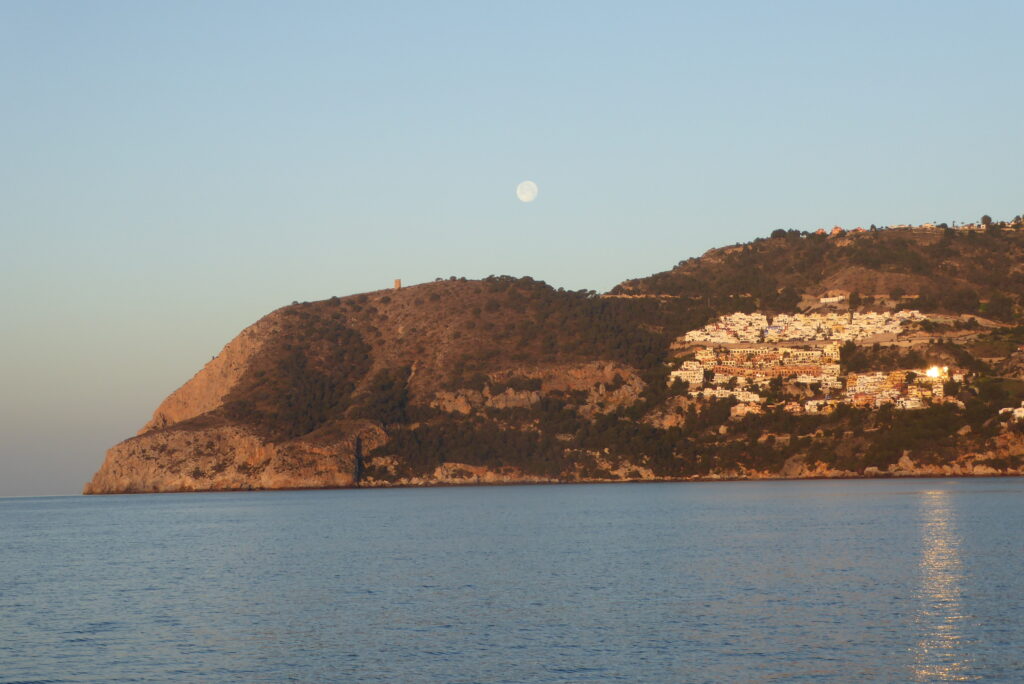
This is a lovely bay, with options to shelter from most wind directions, and a town that looks almost interesting enough to prepare the tender and go ashore, but we didn’t quite muster enough enthusiasm for this much activity, and didn’t even get going until after lunch on Monday. We knew there wouldn’t be any wind to sail, so we settled down to an easy motor on a flat sea, racing along at seven knots at times! Of course, in the last ten minutes before we stopped, the wind rose to a respectable 12 knots – the day’s excuse for afternoon thermal breezes, which are surprisingly frequent, even at this time of year. However, we understand that the weather is exceptionally mild and calm for the Winter, and has been since the Autumn – evidence of global warming?
We looked at a couple of options for anchoring, according to the pilot book, but the first is now laid with moorings and too deep by the time the boat is the requisite 200 metres from the shore. Just around the rocky corner of Punta del Cerrón, we found a small cove, attractive except for the ubiquitous graffiti on the wall behind the beach, to enjoy a beautiful sunset and moonrise, and a calm night.
On Tuesday, our last day of this leg, we set off at a more respectable 0930, noticing some curious bright orange growth on the rocky wall fringing the bay, just below the high water line. Finding a pleasant WSW breeze F3-4 outside the shelter of the cove, we set the gennaker, but the wind was creating a slight swell that met our hull on the starboard stern quarter, making us roll uncomfortably, so we replaced the gennaker with the genoa, and settled down to a steady 5 knots’ progress. Once again, the weather was lovely, sunny with good visibility, a light haze at sea level and light high cloud over the snow-capped ridges of the Sierra Nevada, now visible as a spectacular length of mountain range.
After lunch, Mate decided to changed the angle of roll by gybing into the bay created by the ‘junction’ of the Costa del Sol with the Costa Blanca: suddenly, the rolling foothills encased in plastic, that enables the production of much of Northern Europe’s demand for salad during the Winter, give way to low cliffs of pale rock face, a little like the SE coast of England. The wind eased back to a F4 SW, and we were able to fly the gennaker almost into the port of Almerimar, dodging wind- and kite-surfers near the shore line. Today’s passage of 31M brought us back to land, another Med mooring neatly tucked into by Skipper with a marinero to take our stern lines ashore.
